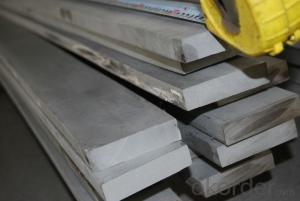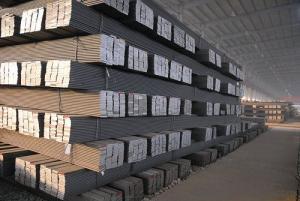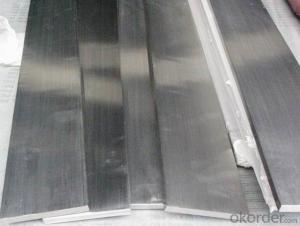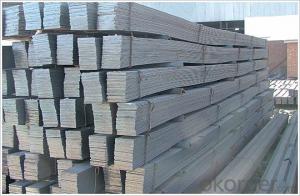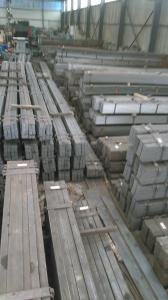Spring stainless steel flat bar for construction
- Loading Port:
- Tianjin
- Payment Terms:
- TT OR LC
- Min Order Qty:
- 10000 m.t.
- Supply Capability:
- 100000 m.t./month
OKorder Service Pledge
OKorder Financial Service
You Might Also Like
Item specifice
Product Description:
OKorder is offering spring stainless steel flat bar for construction at great prices with worldwide shipping. Our supplier is a world-class manufacturer of steel, with our products utilized the world over. OKorder annually supplies products to European, North American and Asian markets. We provide quotations within 24 hours of receiving an inquiry and guarantee competitive prices.
Product Applications:
Spring stainless steel flat bar are ideal for structural applications and are widely used in the construction of buildings and bridges, and the manufacturing, petrochemical, and transportation industries.
Product Advantages:
OKorder's Steel flat bar are durable, strong, and resist corrosion.
Main Product Features:
· Premium quality
· Prompt delivery & seaworthy packing (30 days after receiving deposit)
· Corrosion resistance
· Can be recycled and reused
· Mill test certification
· Professional Service
· Competitive pricing
Product Specifications:
Spring Steel can be divided into two types. One is carbon spring steel, and other one is alloy spring steel.
Alloy spring steel is based on carbon spring steel, by adding one or more alloying elements to improve the mechanical properties, hardenability and other properties to meet the requirement for manufacturing all kinds of spring steel.
Specification of Spring Steel:
-Material: 70Si2CrA
-Production: Hot rolled or cold rolled
-Standard: GB/T·5218-1999
-Type: Spring Steel
-Alloy or no: Alloy
Mechanical Properties:
-Annealing Condition:
1, Tensile Strength: σb/MPa:≤835
2, Elongation: δ/%:≥8
-Quencher condition:
1, Tensile strength: σb/MPa:785~1175
2, Elongation: -
Usage/Applications of Spring Steel:
For manufacturing all kinds of flat spring or round spring with small sections, clockwork spring,
Packaging & Delivery of Spring Steel:
-Packing Detail: The products can be packed in bundles by steel wires.
-Marks:
1, Tag marks: the tag marks will be tied up to each bundle of the products. The information is usually including supplier’s logo and name, product name, made in China, products’ specifications, the painted color and other information requested by customers.
2, Color marks: we will paint both ends of the bundles of these products to make sure that they are more evident. It’s will be more convenient for the customers to distinguish them at the destination port.
-Delivery Detail:
1, Delivery time: 30~45 working days after receive buyer’s T.T. or L/C.
2, Delivery status should be written in the contract. (Heat treatment or no)
Payment:
-Invoicing on theoretical weight or actual weight as customer’s request.
-FOB, CFR or CIF.
-Regular terms of payment:
1, 30% payment in advance, the remaining balance (70% payment) against the copy of B/L. 100% payment before shipment.
2, 30% payment in advance, the remaining balance (70% L/C) against the copy of B/L. 100% payment before shipment.
3, Negotiable.
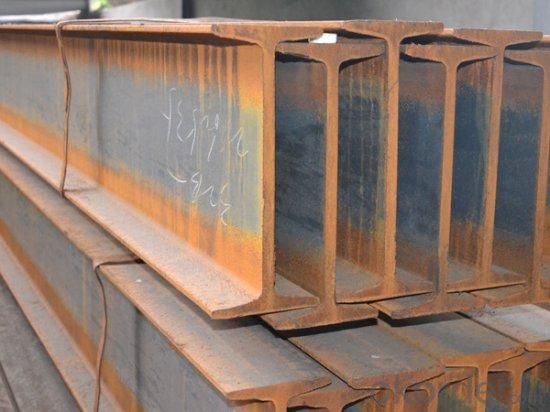

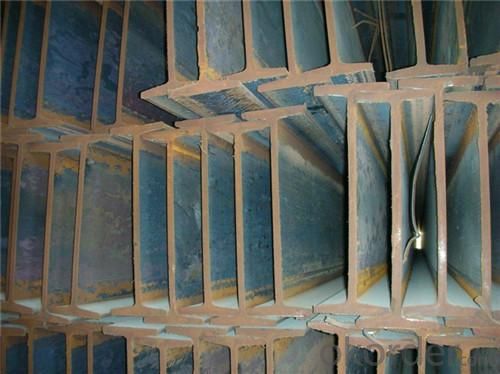
FAQ:
Q1: Why buy Materials & Equipment from OKorder.com?
A1: All products offered byOKorder.com are carefully selected from China's most reliable manufacturing enterprises. Through its ISO certifications, OKorder.com adheres to the highest standards and a commitment to supply chain safety and customer satisfaction.
Q2: Can stainless steel rust?
A2: Stainless does not "rust" as you think of regular steel rusting with a red oxide on the surface that flakes off. If you see red rust it is probably due to some iron particles that have contaminated the surface of the stainless steel and it is these iron particles that are rusting. Look at the source of the rusting and see if you can remove it from the surface.
- Q:Can steel flat bars be cut to length?
- Yes, steel flat bars can be cut to length. Steel flat bars are versatile and can be easily cut using various cutting tools such as saws, shears, or plasma cutters. The process of cutting steel flat bars to length is commonly done in fabrication shops or construction sites to meet specific project requirements. With the appropriate tools and techniques, steel flat bars can be accurately and cleanly cut to the desired length.
- Q:Can steel flat bars be used for manufacturing railway components or tracks?
- Yes, steel flat bars can be used for manufacturing railway components or tracks. Steel is a commonly used material in the railway industry due to its strength, durability, and ability to withstand heavy loads. Flat bars made from steel are often used for various railway components such as brackets, clamps, fasteners, and supports. They can also be used for manufacturing sections of railway tracks, particularly for smaller tracks or temporary installations. However, for mainline railway tracks, the use of steel flat bars alone may not be sufficient, and other specialized components such as rails and sleepers are typically required for a safe and reliable track system.
- Q:Do steel flat bars have a specific modulus of elasticity?
- Yes, steel flat bars have a specific modulus of elasticity. The modulus of elasticity is a measure of the stiffness or rigidity of a material and is defined as the ratio of stress to strain within the elastic range. For steel, the modulus of elasticity is approximately 200 gigapascals (GPa) or 29,000,000 pounds per square inch (psi). This means that steel flat bars will deform elastically under a certain amount of stress and return to their original shape once the stress is removed, as long as the applied stress does not exceed the elastic limit.
- Q:How to use -40*4 galvanized steel bar to do grounding electrode?
- Take 3 2.5m long 50 galvanized steel bars spaced 5m, buried in the ground 0.6m, and then galvanized flat steel and angle steel welding.
- Q:What is the difference between hot-rolled and cold-drawn steel flat bars?
- Hot-rolled and cold-drawn steel flat bars find extensive usage across multiple industries, but they possess distinct dissimilarities. Hot-rolled steel flat bars are manufactured by subjecting a steel billet or slab to high temperatures and subsequently rolling it into the desired shape, such as a rectangle or square. This process enables quick and efficient production of larger sizes and quantities. The resulting hot-rolled steel bars possess a rougher surface and may contain mill scale or a slight oxide layer due to the elevated temperatures involved in the manufacturing process. Conversely, cold-drawn steel flat bars are formed by pulling a hot-rolled steel bar through a die at room temperature. This technique aids in enhancing the dimensional accuracy, surface finish, and mechanical properties of the steel. Cold-drawn steel bars exhibit a smoother surface and tighter tolerances compared to their hot-rolled counterparts. Additionally, they possess higher yield strength and tensile strength, making them suitable for applications requiring increased strength and precision. Due to their divergent manufacturing processes, hot-rolled steel flat bars are generally more cost-effective and easily obtainable in larger sizes and quantities. They are commonly employed in construction, manufacturing, and general fabrication applications, where surface finish and tight tolerances are of lesser importance. In contrast, cold-drawn steel flat bars are favored for applications necessitating higher precision, tighter tolerances, and improved mechanical properties. They are frequently utilized in industries such as automotive, aerospace, and machinery manufacturing, where strength, dimensional accuracy, and surface finish are critical factors. In conclusion, the primary disparities between hot-rolled and cold-drawn steel flat bars reside in their manufacturing processes and resultant properties. Hot-rolled bars offer cost-effectiveness and availability in larger sizes, whereas cold-drawn bars provide enhanced precision, tighter tolerances, and improved mechanical properties. The selection between the two depends on the specific requirements of the application and the desired balance of cost, strength, and surface finish.
- Q:Are steel flat bars commonly used in the renewable energy sector?
- Steel flat bars are frequently employed in the renewable energy sector. They find extensive usage in different capacities, including providing structural support, framing, and mounting systems for solar panels, wind turbines, and other renewable energy infrastructure. The outstanding strength, durability, and versatility of steel flat bars make them the preferred option for constructing renewable energy projects. Moreover, steel is an eco-friendly material due to its high recyclability, which aligns perfectly with the environmentally conscious nature of the renewable energy sector. In conclusion, the utilization of steel flat bars plays a vital role in the growth and advancement of renewable energy installations.
- Q:How are steel flat bars used in construction?
- Steel flat bars have a wide range of applications in construction. They are commonly used to provide structural support in buildings and infrastructure. By serving as beams or columns, they offer stability and strength to structures. Construction projects also make use of steel flat bars for framing and bracing purposes. These bars can be used to create robust frameworks for walls, roofs, and floors, forming a sturdy foundation for the rest of the building components. Furthermore, steel flat bars are utilized to reinforce concrete structures. They are often embedded within concrete slabs or walls to enhance strength and prevent cracking or structural failure. These bars act as tension members, evenly distributing forces and improving the overall durability of the concrete structure. Moreover, steel flat bars are employed in the manufacturing of various construction components like brackets, connectors, and supports. These components play a crucial role in joining different elements of a building together, ensuring stability and functionality. In conclusion, steel flat bars are indispensable in construction due to their ability to provide structural support, reinforce concrete, and manufacture essential components. Their versatility, strength, and durability make them a popular choice for many construction projects.
- Q:Are steel flat bars commonly used in the construction of transportation facilities?
- Yes, steel flat bars are commonly used in the construction of transportation facilities. Steel flat bars are versatile and strong, making them suitable for various applications in transportation infrastructure. They can be used for framing structures, reinforcing concrete, or as support beams in bridges and highways. Steel flat bars provide excellent load-bearing capacity and resistance to bending, making them an ideal choice for constructing transportation facilities that need to withstand heavy loads and harsh weather conditions. Additionally, steel flat bars are readily available in different sizes and can be easily fabricated to meet specific design requirements, making them a preferred material in the construction industry.
- Q:50*4 hot dip galvanized flat steel can be used as grounding. How many square feet can be used instead of ground wire?
- GB is not 50*4, but 4*40; International Electrotechnical union IEC is 3*25 can also, and if it is small houses, GB only 6mm diameter of it. It can be seen that the size of flat steel is mainly due to the consideration of mechanical strength and more than the consideration of electrical performance
- Q:What are the different coatings available for steel flat bars?
- There are several different coatings available for steel flat bars, depending on the specific application and desired properties. Some common coatings include: 1. Hot-dip galvanizing: This process involves immersing the steel flat bar in a bath of molten zinc, which forms a protective layer over the surface. Galvanizing provides excellent corrosion resistance and can withstand harsh environments. 2. Powder coating: Powder coating involves applying a dry powder to the steel flat bar, which is then heated to form a protective layer. This coating provides excellent durability, resistance to chipping and scratching, and comes in a wide range of colors. 3. Epoxy coating: Epoxy coatings are often used in industrial settings to provide corrosion protection. They are typically applied as a two-part system and provide excellent chemical resistance and durability. 4. Paint: Steel flat bars can also be painted with various types of paints, including oil-based, acrylic, or epoxy paints. Paint coatings provide some level of protection against corrosion and can be customized with different colors and finishes. 5. Vinyl coating: Vinyl coatings are often used for aesthetic purposes or to provide a soft, non-slip surface. These coatings are typically applied by heat shrinking a vinyl sleeve onto the steel flat bar. It is important to consider the specific requirements of the application, such as the level of corrosion resistance needed, environmental factors, and aesthetic preferences, when selecting the appropriate coating for steel flat bars. Consulting with a professional or coating manufacturer can help determine the best coating option for a particular project.
1. Manufacturer Overview |
|
|---|---|
| Location | |
| Year Established | |
| Annual Output Value | |
| Main Markets | |
| Company Certifications | |
2. Manufacturer Certificates |
|
|---|---|
| a) Certification Name | |
| Range | |
| Reference | |
| Validity Period | |
3. Manufacturer Capability |
|
|---|---|
| a)Trade Capacity | |
| Nearest Port | |
| Export Percentage | |
| No.of Employees in Trade Department | |
| Language Spoken: | |
| b)Factory Information | |
| Factory Size: | |
| No. of Production Lines | |
| Contract Manufacturing | |
| Product Price Range | |
Send your message to us
Spring stainless steel flat bar for construction
- Loading Port:
- Tianjin
- Payment Terms:
- TT OR LC
- Min Order Qty:
- 10000 m.t.
- Supply Capability:
- 100000 m.t./month
OKorder Service Pledge
OKorder Financial Service
Similar products
New products
Hot products
Hot Searches
Related keywords


